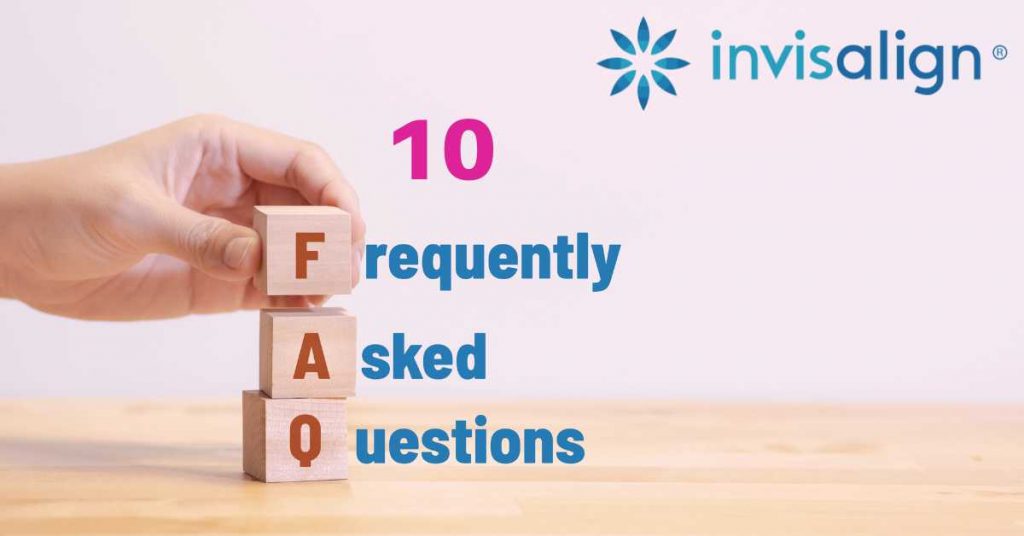People considering Invisalign clear aligners may have a variety of questions related to the process, cost, effectiveness, and overall experience of using Invisalign to straighten their teeth. Some common questions include:
- How does Invisalign work, and is it as effective as traditional braces?
- What are the advantages and disadvantages of Invisalign compared to other teeth straightening options?
- What is the cost of Invisalign treatment, and does insurance cover it?
- How long does the treatment typically take, and how often do I need to wear the aligners?
- Will the aligners hurt or be uncomfortable to wear?
- Can I eat and drink normally while using Invisalign?
- How often do I need to see the dentist during Invisalign treatment?
- Can Invisalign correct all types of teeth alignment issues, or are there some cases where traditional braces are a better option?
- How do I take care of the aligners, and how often do I need to replace them?
- What happens after I finish the Invisalign treatment, and will I need to wear a retainer?
Find the answers to your questions below:

1. How does Invisalign work, and is it as effective as traditional braces?
Invisalign clear aligners work by using a series of custom-made, removable aligners to gradually move teeth into their desired position. The aligners are made of a smooth, clear plastic material that is virtually invisible when worn.
During the treatment, patients typically receive a new set of aligners every two weeks, with each set slightly adjusting the position of their teeth. This process continues until the teeth are in their final, desired position.
Invisalign can be as effective as traditional braces in many cases, but the effectiveness can depend on the severity of the dental issue being corrected. Invisalign is particularly effective in treating mild to moderate dental problems such as minor crowding or spacing issues. However, more severe dental problems such as large gaps or significant bite issues may require traditional braces or other orthodontic treatment.
2. Are there pros and cons with Invisalign compared to other teeth straightening options?
As with all healthcare solutions, nothing applies to everyone. A ‘One Fits All’ solution simply doesn’t exist. Invisalign clear aligners offer several advantages and disadvantages compared to other teeth straightening options. Some of these include:
- Aesthetics: Invisalign aligners are virtually invisible when worn, making them a popular choice for people who prefer a more discreet treatment option.
- Comfort: The smooth plastic aligners are generally more comfortable than traditional braces, as they do not have any sharp brackets or wires that can cause irritation.
- Convenience: Invisalign aligners are removable, making it easier to eat and clean your teeth compared to traditional braces.
- Effective: Invisalign can be as effective as traditional braces in treating mild to moderate dental problems.
- Cost: Invisalign can be more expensive than traditional braces, and it may not be covered by insurance.
- Discipline: Invisalign requires a high level of discipline and commitment to wear the aligners for the required amount of time each day.
- Limited applicability: Invisalign may not be suitable for all dental problems, such as severe bite issues or tooth rotations, where traditional braces may be more effective.
- Attachments: In some cases, attachments may need to be placed on the teeth to help the aligners grip and move the teeth, which can affect the aesthetics of the treatment.
3. What is the cost of Invisalign treatment, and does insurance cover it?
The cost of Invisalign treatment can vary depending on several factors, including the length of the treatment, the severity of the dental issue being corrected, and the geographic location of the orthodontist.
Insurance coverage for Invisalign also varies, and it is important to check with your local dental insurance provider to see if they cover the treatment. Some insurance plans may cover a portion of the cost of Invisalign, while others may not cover it at all. Additionally, some dentists or orthodontists may offer financing options or payment plans to help make Invisalign more affordable.
It’s important to keep in mind that while Invisalign may be a little bit more expensive than traditional braces, it offers significant benefits, such as improved aesthetics and increased comfort, which may make it worth the investment for some patients. Additionally, untreated dental problems can lead to other dental issues and may end up being more costly in the long run.
4. How long does the Invisalign treatment typically take, and how often do I need to wear the aligners?
The duration of Invisalign treatment can vary depending on the severity of the dental issue being corrected, as well as the patient’s individual treatment plan. In general, the treatment can take anywhere from 6 months to 18 months, with the average treatment time being around 12 to 14 months.
The aligners need to be worn for at least 22 hours per day throughout the treatment to achieve the desired results. Patients typically change to a new set of aligners every two weeks, and regular check-ups with the orthodontist are usually scheduled every 6 to 8 weeks to monitor the progress and make any necessary adjustments to the treatment plan.
It’s important to follow the dentist’s / orthodontist’s instructions carefully throughout the treatment to ensure that it is successful and to avoid any delays in achieving the desired results. Additionally, patients should take good care of their aligners, keeping them clean and storing them properly when not in use, to ensure that they last throughout the treatment period.
5. Will the aligners hurt or be uncomfortable to wear?
6. Can I eat and drink normally while using Invisalign?
You can eat and drink normally while using Invisalign, but there are some important guidelines to follow to ensure the best possible results and to avoid damaging the aligners.
When eating or drinking, the aligners should be removed to prevent them from becoming stained or damaged. It is recommended that you rinse your mouth with water before putting the aligners back in after eating or drinking to help prevent food particles from getting trapped between your teeth and the aligners. It is also important to brush your teeth and floss before reinserting the aligners to keep your teeth and gums healthy and to prevent bacteria buildup.
7. How often do I need to come in for adjustment appointments during Invisalign treatment?
It is important to attend all of your scheduled appointments with your dentist or orthodontist to ensure that your treatment progresses smoothly and to avoid any delays in achieving the desired results. If you experience any issues or concerns during the treatment, it is important to contact your dentist or orthodontist right away to address them and prevent any complications.
8. Can Invisalign correct all types of teeth alignment issues, or are there some cases where traditional braces are a better option?
Your dentist or orthodontist will be able to assess your dental issue and determine whether Invisalign is a suitable treatment option for you or whether traditional braces would be more appropriate. In some cases, a combination of Invisalign and traditional braces may be used to achieve the desired results.
9. How do I take care of the aligners, and how often do I need to replace them?
Here are some tips on how to take care of your aligners:
- Clean your aligners regularly: It is important to clean your aligners regularly to prevent bacteria buildup and keep them looking their best. You can clean them using a soft-bristled toothbrush and clear, unscented antibacterial soap, or a specialized Invisalign cleaning system.
- Remove your aligners when eating or drinking: To prevent damage and staining of the aligners, it is important to remove them when eating or drinking anything other than water.
- Store your aligners properly: When not wearing your aligners, be sure to store them in their case to prevent loss or damage.
- Wear your aligners for the recommended amount of time: To ensure the best possible results, it is important to wear your aligners for the recommended amount of time each day as specified by your orthodontist.
The frequency of aligner replacement will vary depending on your individual treatment plan and the severity of your dental issue. In general, a new set of aligners will be provided every 1-2 weeks, and you will need to wear each set for approximately 1-2 weeks before moving on to the next set.
It is important to follow your dentist’s or orthodontist’s instructions for wearing and caring for your aligners to ensure the best possible results and avoid any complications during treatment.
10. What happens after I finish Invisalign treatment, and will I need to wear a retainer?
After completing your Invisalign treatment, you will need to wear a retainer to help maintain the new position of your teeth. This is an important step to ensure that your teeth do not shift back to their original position after treatment.
Retainers can be either removable or fixed, and your orthodontist will recommend the best option for you based on your individual needs and goals.
It is important to follow your orthodontist’s instructions for wearing and caring for your retainer to ensure the best possible results and prevent any complications. You will also need to attend regular follow-up appointments with your orthodontist to monitor your progress and make any necessary adjustments to your retainer.
Have more questions? You First Dental is here to answer them. Make an Invisalign appointment today!




